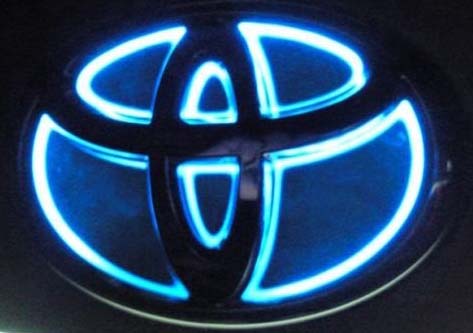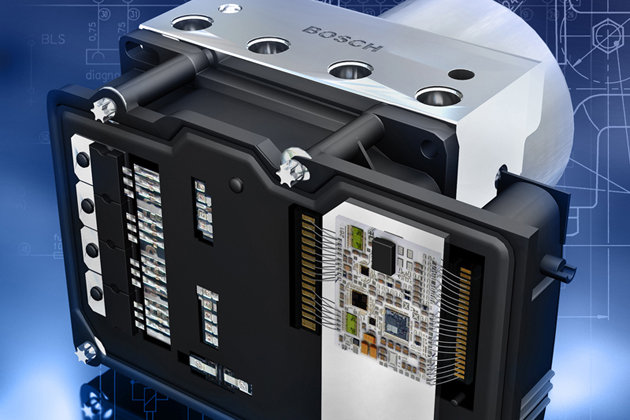
11 things we turn a blind eye to in Prius and AV
Content
- 1. Hatchback without rear wiper
- 2. Aerodynamics beyond practicality
- 3. Wheels like from wheelbarrows
- 4. Massive savings are seen in savings on soundproofing materials
- 5. No fifth place
- 6. Small shallow trunk
- 7. Top version with manual seat adjustment
- 8. The quality of the materials does not match the legend of the model
- 9. The absence of a tachometer, although it would be of little use.
- 10. Big engine - little power
- 11. Engine sonic boom due to CVT
- Summation
The body of the current generation Toyota Prius in the Plug-in version is slightly different from the regular Hybrid version. The appearance of the front and rear lights Plug-in resembles a hydrogen Mirai. Due to this, subjectively, this model looks almost like a spaceship, like a car from the distant future, different from any currently produced compact. In many ways, it is. The only question is, is it good?
1. Hatchback without rear wiper
Outside the windows, autumn, rain more and more often makes our trip difficult. During the parking maneuver, you will have to look back several times. The Prius has a problem with this. There is no rear wiper to clean the windshield. In addition, the tailgate window is split in two, placing the spoiler in the center of our field of vision, an important element of the aerodynamics of the rear. True, there is a rear-view camera, but its lens gets dirty very quickly, which makes it not very useful. There are also quite large mirrors. In the end, you can park, but in the case of cars of competitors it is much easier.
2. Aerodynamics beyond practicality
The aforementioned part of the tailgate, which bisects the rear window, is not the only aerodynamic element. In fact, the entire body of the Prius is designed to reduce air resistance. The front hood and windshield almost form a single line, continuing into the roof and tapering towards the rear. The effect of the excellent 0,24 Cx ratio was achieved by Toyota with the appropriately shaped Prius sidewall, which connects to the taillights and bumper so that the airflow separates from them in a controlled manner. The shape of the rear window is unusual. The axle of the car is bent inward, forming a wave. All these elements contribute to the amazing appearance of the car, but also negatively affect visibility from the inside. Feeling the external dimensions of the car takes much longer to get used to than in a "regular" compact.
3. Wheels like from wheelbarrows
The Toyota Prius Plug-in Hybrid takes the path to aerodynamic excellence on very small wheels. One of the principles of automotive aerodynamics is to fill the wheel arches as little as possible. Objectively, 195/65/15 wheels are not small. Two generations ago, fifteen inches was the typical size for a C-segment car. Today, smaller class cars are increasingly using XNUMX-inch wheels. In the case of the Prius, the rear wheels especially appear small as the wedge-shaped sideline of the body rises to form a very large rear fender sheet area.
4. Massive savings are seen in savings on soundproofing materials
While aerodynamic efficiency means that even when driving fast, we will not be disturbed by the noise of the air flowing around the body, but by the sound of the engine. There's no denying that the Prius is simply louder than the competition. Of course, this does not apply to the situation when we use an electric motor, then the acoustic comfort is complete. The above-average engine noise is affected by the need to save weight, which was most likely achieved by reducing the amount of sound deadening materials used. You have to make up for the extra pounds added by the hybrid system's batteries. The regular Prius weighs over 1300kg, while the Plug-in weighs another 170kg. Other C-segment cars are quieter inside.
5. No fifth place
Sometimes in the automotive world, incomprehensible and illogical decisions are made. A great example of this is the deprivation of the Prius in the Plug-in version of the fifth passenger seat. Although there are no complaints about the lack of legroom and shoulder height in the back, only two people can sit there. In the middle of the sofa there is space for an armrest, cup holders and an additional storage compartment. Yes, similar solutions can be found in other cars, but most often they are luxury limousines such as the Mercedes-Maybach or the typically sporty Grand Tourer Porsche Panamera. In a compact, the lack of a fifth seat limits its practicality.
6. Small shallow trunk
Even more practical use of the cabin is limited to a small luggage compartment with a very high loading threshold. Its capacity, just over 350 liters, is an acceptable value in the compact class. However, due to the batteries under the floor, it is very shallow, which, combined with the low and sloping tailgate, with the windows curved inward, makes it impossible to pack even a taller suitcase. After folding the rear seats, the situation improves, but here too it is unusual, because the plane of the backrests creates a step down, the opposite of that in conventional cars. At this point, the designers from Japan obviously did not have enough time to decide how to fold the rear seats differently so that they form a flat surface with the trunk floor, as is the case, for example, in VW. Golf.
7. Top version with manual seat adjustment
The car that our editors have on our long-range test is the richer of the two available Prius Plug-in options, the Prestige + Executive. Although it is equipped with numerous electrical accessories such as a keyless entry system, power mirrors and heated front seats, the latter are not electrically adjustable even at an additional cost. In a rich configuration, the usual metal handle-rod (identical to the basic version of Aygo or Yaris), which is used to adjust the distance between the front seats, simply does not fit. Competitors offer such an add-on for an additional fee in mid-range trim levels.
8. The quality of the materials does not match the legend of the model
The current generation is the fourth version of the model with which Toyota began to shape its image as a manufacturer of environmentally friendly and economical cars. Although hybrid technology has been in development for over two decades, it is still very expensive. For the price you have to pay for a Prius, you can expect materials that are at least top-notch for the compact class. Meanwhile, in addition to the pleasant to the touch leather upholstery, the Prius is buried in black plastic, typical for compacts of the 90s, and, unfortunately, of the same quality ... There is not a single element of soft material in the cabin. . Both the door panels and the top of the dash are hard and not scratch resistant. In addition, the number of currently fashionable glossy finishes is exaggerated. Fortunately, not all of them have the typical "piano black" color. Some of them are white, which in turn resembles plumbing.
All elements are perfectly assembled and after a year of intensive use in the cabin there are no crackles, squeaks and other unwanted sounds - in this respect, competitors have a lot to learn from Toyota.
9. The absence of a tachometer, although it would be of little use.
The hybrid system is a very complex device. Information about various aspects of its operation can be seen on the displays on the dashboard and on the center console. Although we will find there the ability to control various parameters of the car, the tachometer will not be among them. Although his readings would be of little use, the Prius CVT does not even have programmable gears, in the last twenty years the engine speed indicator has become the standard even in city cars.
10. Big engine - little power
The basis of the hybrid unit in Toyota compact cars is a 1.8-liter gasoline engine with a capacity of only 98 hp. In combination with an electric motor, we get a maximum power of 122 hp. This is still not much for a car with a curb weight of more than one and a half tons. Modern downsized gasoline engines can easily get 200 hp from this power. However, we should not forget that the Prius unit is part of a hybrid system, and they are governed by slightly different rules.
11. Engine sonic boom due to CVT
For a hybrid system, the best way to get power to the wheels is with a continuously variable variator. In Toyota it works very well. Runs smoothly, never causing unpleasant jerks to users. Unfortunately, the use of this solution is associated with one significant drawback. Each acceleration is accompanied by a sudden and very significant increase in noise. In order to use the maximum dynamics of the engine, we immediately turn it on at high speeds, at which it remains until the gas pedal is released. This problem would certainly be lessened if Toyota programmed the "gear" CVT "Prius" - as Honda did in the Jazz or Subaru in the current generation of the XV model.
Summation
The differences between the Prius Plug-in and the regular compact can mostly be considered minor. To park - in the absence of a windshield wiper - you always have time somehow. The aerodynamic details make us fly a "beautiful spaceship". We can replace small wheels with large ones - for example, from Avensis and combustion will not suffer much from this. We rarely carry 5 people, there is enough trunk for shopping, we install the seat only once when we start driving, and we drown out noisy engines with standard JBL acoustics in this version. The only thing Toyota really needs to improve is the quality of the materials used, and then the Prius will become a full-fledged, albeit unusual, compact car.
